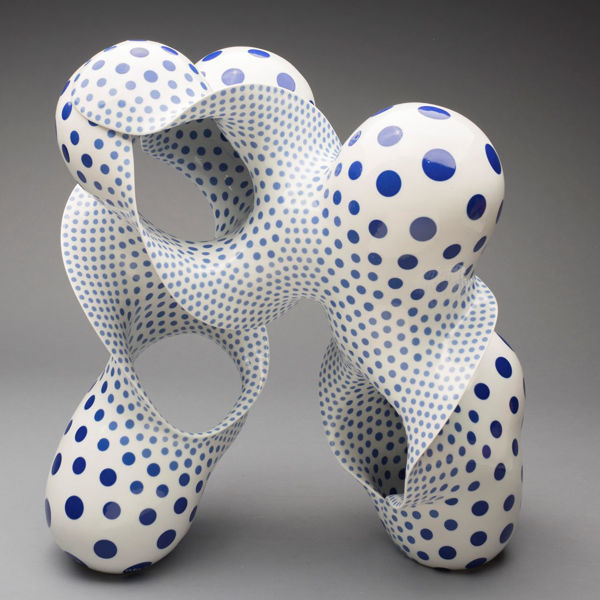Ceramics
Title: Scars, Tattoos and other Distinguishing Marks No. 7
Woodward was born in Council Bluffs, Iowa and is based in New York City. His surreal imagery against human forms is outstanding as seen in both these works.
Title: Schlitz Box
The wit & rigor of Spinski’s trompe l’oeil work gives it a particularly compelling vitality, the artist seemingly having been able to alchemise his clay into any material or form. Often, as here with 'Schlitz Box’, there’s utilitarian purpose laid bare, and in his life Spinski referred to his practice as an inversion of the chinese Yixing philosophy where unusual materials were often used to create harmonious and resolved teapots or other ceramic work. Spinski drew objects that speak of a hurried or imaginatively chaotic lifestyle, but in focus and attention to detail (a collection of dust in the folds of the cap, a faded signature upon a baseball) compose a meditative weight.
Title: Scorpion
The heavily floral pattern on the porcelain carapace takes the sting out of the tail of ‘Scorpion’ slightly — the finely painted surface recalling Shu’s interest in combining a traditional royal class of Chinese ceramic design with the modern industrial design of chrome, and aligning favourably with such a striking and stately likeness, whose pose still manages to unsettle. Shu has spoken of aviation and machines of flight as an influence on his practice, how those entities convey a sense of motion even when stationary.
Title: Sculptural Lidded Ceramic Container
Sculptural lidded ceramic container with handles and polychrome glazes
Title: Shift and Progression, No. 5
Martin Smith is Professor of Ceramics at the Royal College of Art, London and considered to be one of the most important minimalists in ceramics today. Martin Smith's work is included in many public collections including the Victoria and Albert Museum, London, the National Museum of Modern Art, Tokyo, the Stedelijk Museum, Amsterdam, The Metropolitan Museum of Art, New York, the Museum Boijmans van Beuningen, Rotterdam, the Museum Kunst und Gewerbe, Hamburg, and the Kanazama Crafts Council, Taiwan.





































